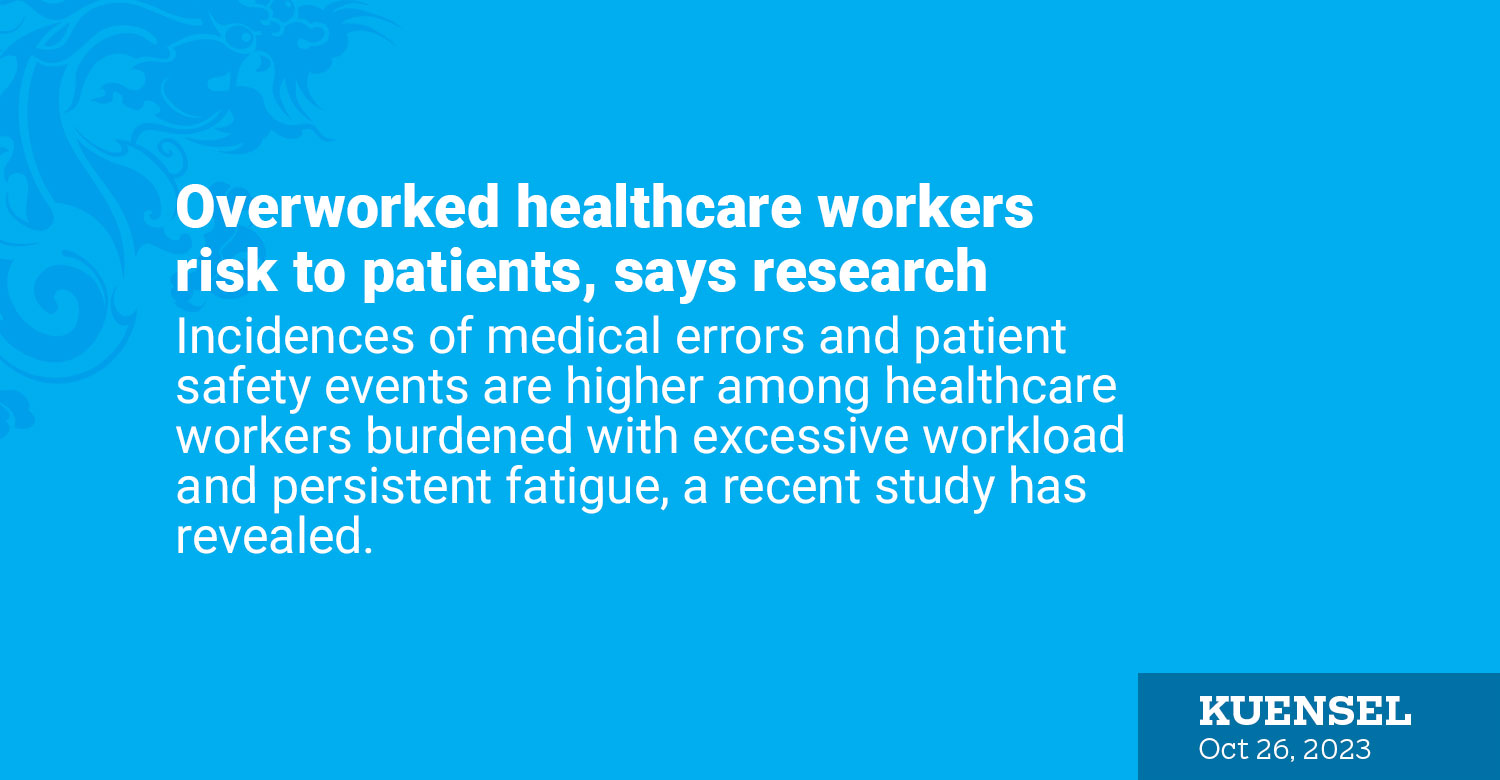
Incidences of medical errors and patient safety events are higher among healthcare workers burdened with excessive workload and persistent fatigue, a recent study has revealed.
‘Patient safety culture among healthcare professionals in Bhutan’ by Rinchen Pelzang, Norbu, and Kinga Jamphel was carried out in six dzongkhag hospitals, two regional referral hospitals, and the national referral hospital in 2021.
The study shows that healthcare professionals had an average patient safety culture of 61.28 percent, but some areas require urgent attention to ensure safer healthcare delivery across the nation.
The study revealed that a majority of the 694 participants, including 304 nurses and clinical nurses, expressed feelings of being overworked. This has led the existing staff to work together to compensate for the shortage of hospital workforce.
The issues concerning staffing and work pace, and healthcare professionals working longer hours than ideal for patient care can be attributed to either a shortage of human resources in hospitals or mismanagement of human resources.
“Mismanagement of human resources usually involves releasing of staff for training and workshops haphazardly without proper planning,” said the authors, adding that different programmes from the ministry, sometimes, organize various training and workshops almost at the same time.
To address staff workload, the study recommends optimising the staffing numbers at workstations through proper recruitment and management. It also recommends rationalising staff release for various training sessions and workshops.
In addition, the study also recommends hospital management support for patient safety and quality improvement initiatives, as well as creating an environment that fosters a just and learning culture.
One of the concerning findings of the study is the absence of a national patient safety event reporting system in the country, even though some hospitals have implemented their own patient safety event reporting mechanisms.
To improve the patient safety event reporting mechanism in hospitals and prevent similar incidents from happening in the future, the study recommended the establishment of a robust national patient safety event reporting system in the country.
This system could generate useful information about the nature, extent, and underlying causes of patient safety events. “The information generated from the review of these patient safety events can be used for improving the healthcare system,” said the authors.
The study pointed out that despite the implementation of several patient safety programmes and protocols, the importance of patient safety culture has not been stressed as an essential component of safety and quality improvement strategy.
Given the absence of recorded evaluations of patient safety culture in healthcare facilities, the study recommends that hospital management should equip themselves with the basics of patient safety and quality improvement science and take a more proactive role in improving patient safety culture.
“An important component of patient safety culture is the presence of an articulated management’s commitment to patient safety with shared values, beliefs, and behavioural norms translated to all levels within hospitals and healthcare organizations,” said the authors.
Such commitment from management is expected to encourage reporting of patient safety events without fear and also help create a culture that prioritises learning from mistakes rather than blaming.
To encourage voluntary reporting of patient safety events by staff, the focus should be on learning from the events to improve the standards of care, rather than on blaming and taking punitive actions against the staff, according to the study.
“Punitive actions should be restricted to cases in which there has been gross and conscious disregard of hospital norms and standards,” said the authors.
The study also recommends conducting additional research to identify the nature, scope, and risk factors associated with patient safety events at various levels of hospitals.
Studies also show that between 44,000 and 98,000 people in US hospitals die due to preventable medical errors annually. About 1 in 10 hospitalized patients sustains injuries, and at least 50 percent of these cases are preventable. About two-thirds of all patient safety events occur in low and middle-income countries.












